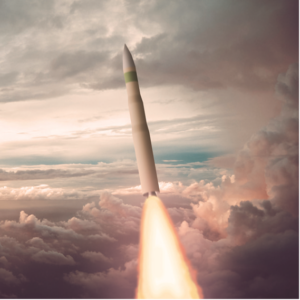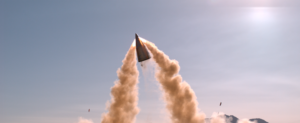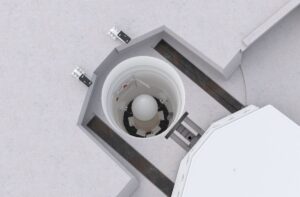Ground Based Strategic Deterrent (GBSD)
-
 Air Force
Air ForceUSAF Explores Possible Minuteman III Development, Operations, Sustainment Program
The U.S. Air Force Nuclear Weapons Center may hold an industry day in late August at Hill AFB, Utah to gauge industry capacity to support a possible ICBM Development, Operations, […]
-
 Nuclear Modernization
Nuclear ModernizationAir Force and Space Force Conduct Test of Unarmed Minuteman III
The Air Force’s Global Strike Command and U.S. Space Force on June 4 launched an unarmed Minuteman III intercontinental ballistic missile, equipped with one re-entry vehicle. The test is part […]
-
 Nuclear Modernization
Nuclear ModernizationNuke Agency Watching Sentinel Testflight Schedule as Air Force Nunn-McCurdy Review Grinds On
The schedule for one of Sentinel’s nuclear warheads will not change until at least the end of the Air Force’s review of the budget-busting missile, the head of the National […]
Tagged in: -
 Nuclear Modernization
Nuclear ModernizationReplacement ICBM Fuse Closes In On Milestone That Precedes Mass Production
The Kansas City National Security Campus in March produced a proof-of-concept replacement fuse for an Air Force nuclear weapon, the Sandia National Laboratory said last week. The Missouri site cranked […]
Tagged in: -
 Air Force
Air ForceNorthrop Grumman Says Shroud Fly-Off Tests for Sentinel Mark ‘Significant Progress’
Northrop Grumman [NOC] said on Feb. 20 that several recent tests at Naval Air Weapons Station China Lake, Calif., reflect “significant progress” in the engineering, manufacturing and development (EMD) phase […]
Tagged in: -
 Air Force
Air ForceUSAF Examining Cost Reductions, Management Structure Changes for Sentinel
The U.S. Air Force is examining how to reduce the massive civil works project costs that make up a significant part of the Northrop Grumman [NOC] LGM-35A Sentinel future ICBM […]
Tagged in: -
 Air Force
Air ForceNorthrop Grumman Announces Test of Sentinel Stage Two Solid Rocket Motor
Northrop Grumman [NOC] said on Jan. 16 that it has conducted a live, static-fire test of a stage-two solid rocket motor (SRM) for the LGM-35A Sentinel intercontinental ballistic missile at […]
-
 Air Force
Air ForceAir Force General Says Sentinel Can Be Tipped With Multiple Warheads
The U.S. Air Force is prepared to put multiple nuclear warheads atop its new Sentinel intercontinental ballistic missiles if called to do so, according to the officer in charge of […]
Tagged in: -
 Air Force
Air ForceKendall: Sentinel Program ‘Struggling A Little Bit’
U.S. Air Force Secretary Frank Kendall said on Nov. 13 that, of the two service legs of the triad, he is more concerned about the Northrop Grumman [NOC] LGM-35A Sentinel […]
Tagged in: -
 Air Force
Air ForceSTRATCOM Chief Says ‘More Options’ For Nuke Deterrence Always Preferable
When it comes to nuclear deterrence, and the warheads and delivery systems that support it, the more options the better, said U.S. Strategic Command head Aif Force Gen Anthony Cotton. […]
Tagged in:
